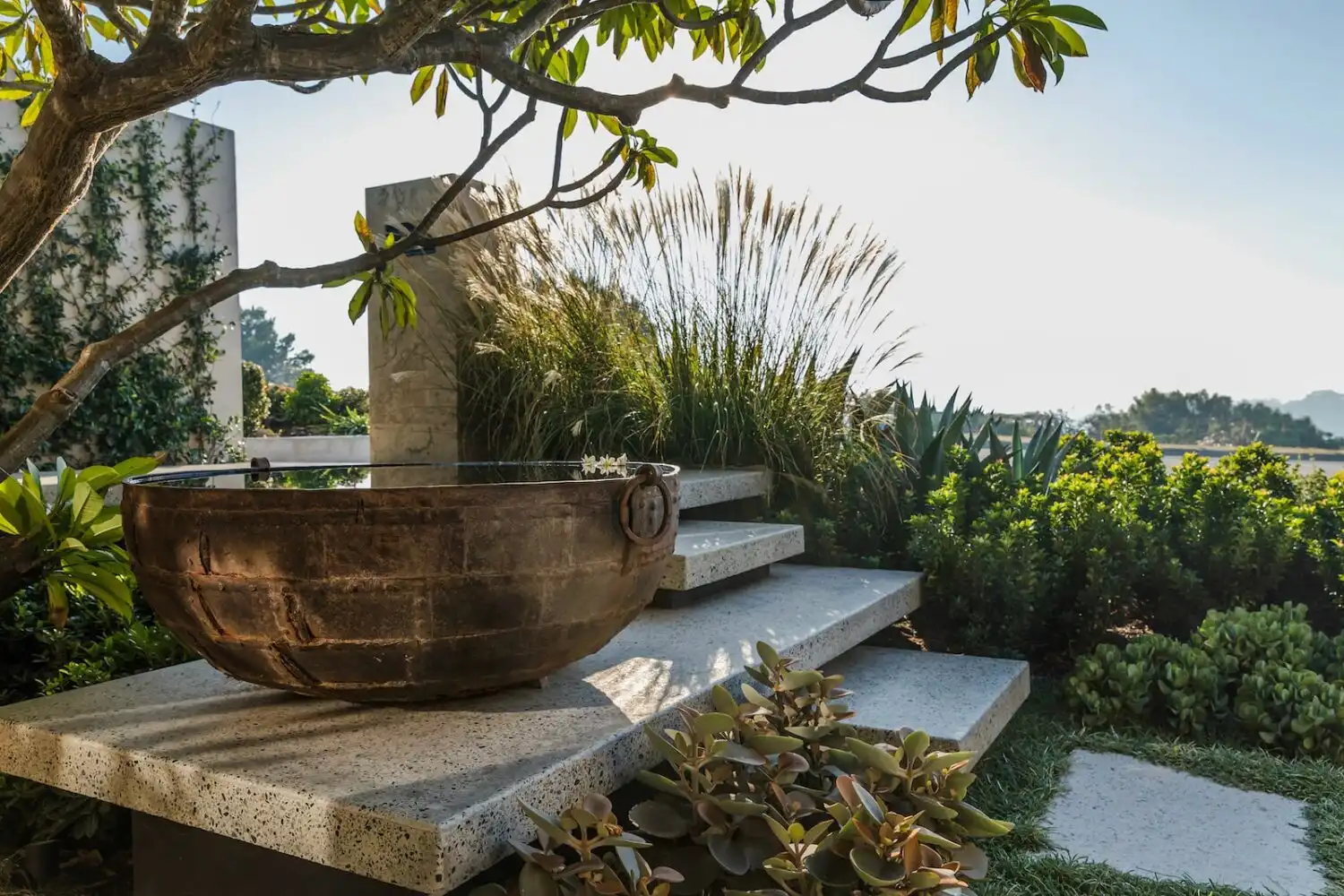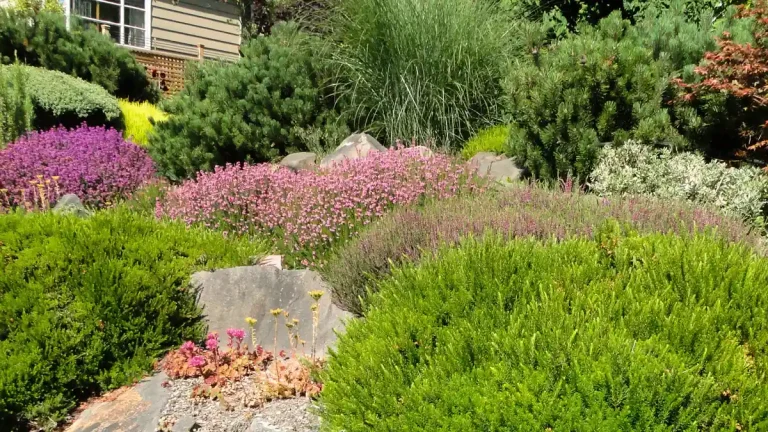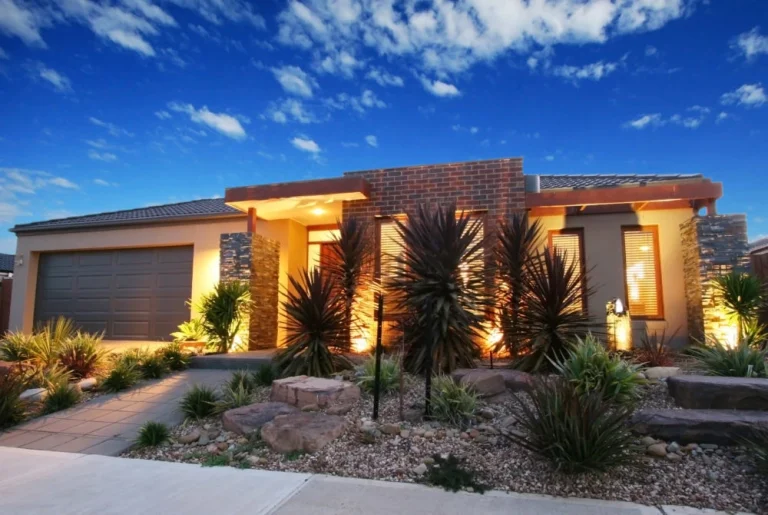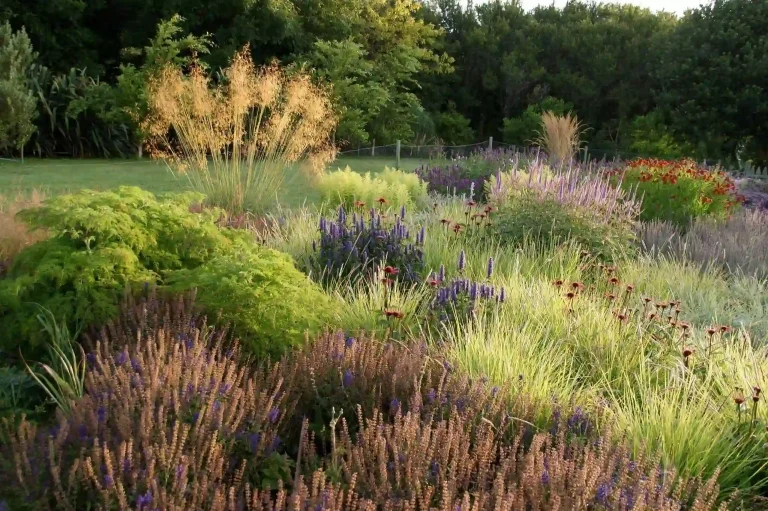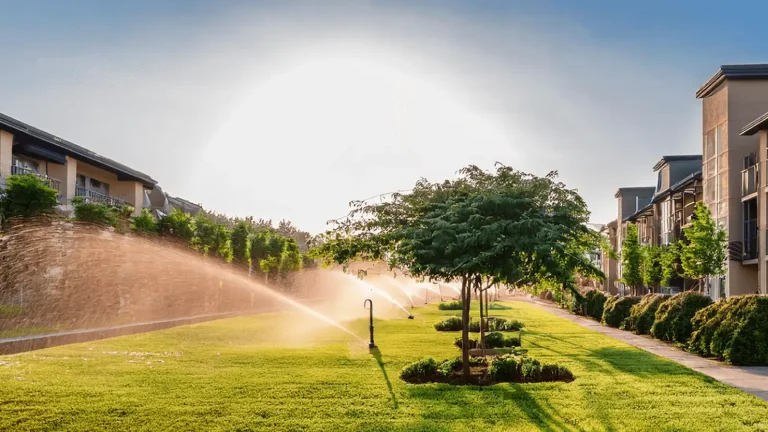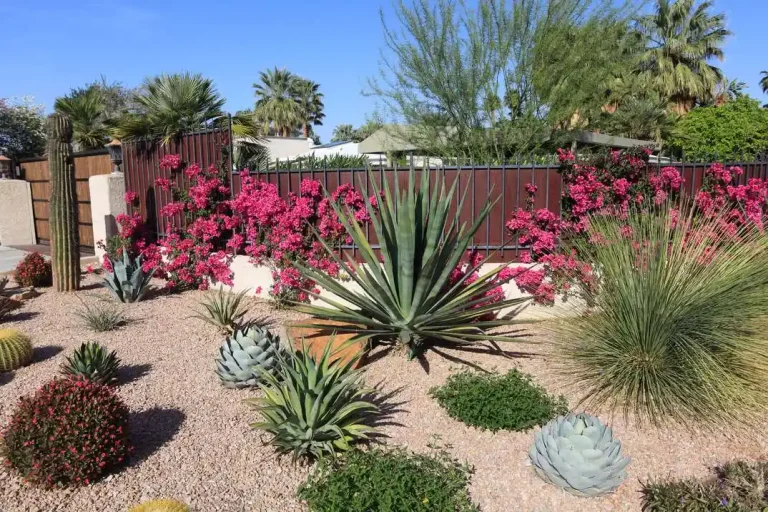Luxury Low‑Water Landscape Design: Elegant & Sustainable Outdoor Solutions
Elevating Design with Restraint
Good luxury design often uses restraint: impressive specimens, strong structure, clean lines, and focal elements rather than overplanting. In a low‑water landscape, you emphasize quality over quantity. Use high-impact plants spaced with breathing room, and let hardscape, negative space, and visual rhythm carry the design. This approach ensures the landscape feels curated, not overstuffed.
Contrast is crucial: pair sculptural desert plants with lighter textures, use stone and gravel as design materials, and treat pathways or seating zones as integral elements. Repeating certain materials or plant forms helps unify the aesthetic across the property.
Site Analysis & Microclimate Strategy
Before selecting plants or systems, analyze sun angles, slope, wind, drainage, and soil types. Identify microclimates that stay cooler, receive shade, or collect rainwater, and use them strategically. For instance, place more sensitive species in sheltered zones, and reserve sun‑exposed areas for ultra-drought-tolerant specimens.
Also, plan for contouring and grading to direct water flows, intentionally steer runoff toward planting zones, use swales or keyline patterns to slow and spread water, and avoid letting rainwater just drain off the site. (The keyline design concept is a method to manage and optimize water flow on a landscape.)
Elements & Techniques in Luxury Low‑Water Landscapes
Plant Selection & Hydrozoning
Choose drought‑tolerant, climate‑adapted plants that still deliver elegance, architectural succulents, textured grasses, ornamental shrubs, and specimen trees with sculptural form. Group plants by their water needs (hydrozoning) so irrigation can be customized per zone. This avoids overwatering water‑frugal species or underwatering needy ones. (Hydrozoning is a practice of clustering plants with similar water needs.)
Use repetition of plant forms and limited palettes to achieve unity and a designer look. Native species often perform best in local climates, reducing input needs and supporting ecological balance.
Hardscape & Permeable Surfaces
Luxury doesn’t require impermeable surfaces. Use permeable pavers, decomposed granite, gravel, or permeable concrete so water can infiltrate rather than run off. For example, decomposed granite is both elegant underfoot and allows percolation into the soil beneath.
Arrange hardscape so runoff is guided into planting trenches or rain gardens. Incorporate contouring or subtle grade transitions for natural flow. Create dry creek beds or bioswales (vegetated channels to slow, filter, and direct runoff) to manage stormwater elegantly.
Mulch, Soil Conditioning & Moisture Retention
Mulch is often undervalued but is vital in low‑water landscapes. A 2–4 inch layer of organic mulch (wood chips, bark, leaf litter) reduces evaporation, suppresses weeds, moderates soil temperature, and gradually adds organic matter.
Soil amendments like compost, biochar, or humus improve infiltration and water storage capacity. Amending the planting zone deeply before planting helps roots access residual moisture.
Integrated Water Systems & Automation
Precision irrigation is core: drip systems, micro‑emitters, pressure‑compensated lines, buried tubing, and smart controllers ensure water reaches only where needed. Use weather sensors, soil moisture probes, or smart timers to adjust watering automatically.
Rainwater harvesting (via barrels or underground cisterns) offsets potable water usage. Divert roof runoff into storage for later use in irrigation. Rain gardens or infiltration zones serve as buffers and recharge areas.
Luxurious landscapes also hide infrastructure tubing under mulch, cisterns buried or behind walls, piping integrated into the structure to preserve visual purity.
Focal Features & Water Elements (Low-Maintenance)
Even in low-water landscapes, water features can still exist, but they must be designed for efficiency. Use recirculating pumps, filtration, and minimal open water surface to reduce evaporation. Water walls, bubbling urns, or reflecting pools with sealed liners and auto-fill systems are favored.
These features become statements, not water sinks, maintaining elegance without heavy resource use.
Why Luxury and Sustainability Are No Longer Opposites
In the past, luxury landscapes often implied vast lawns, lush tropical plants, and heavy irrigation systems. Today, however, the concept of luxury has evolved. Affluent homeowners now prioritize sustainability, resilience, and environmental stewardship without sacrificing aesthetic excellence.
Luxury low-water landscape design embraces modern values by combining curated visual impact with responsible resource management. It’s about celebrating quality over excess. When you select native or drought-adapted plants, use architectural forms, and implement smart systems, you’re not compromising luxur,y you’re redefining it. In fact, many award-winning estate gardens today are also models of water efficiency and ecological intelligence.
Product Examples for Luxury Low‑Water Design
Below are real product options that can be integrated into a luxury low-water landscape. Each is described with details, benefits, and use cases.
1. Rain Bird ST8O‑2.0 WiFi Smart Irrigation Timer
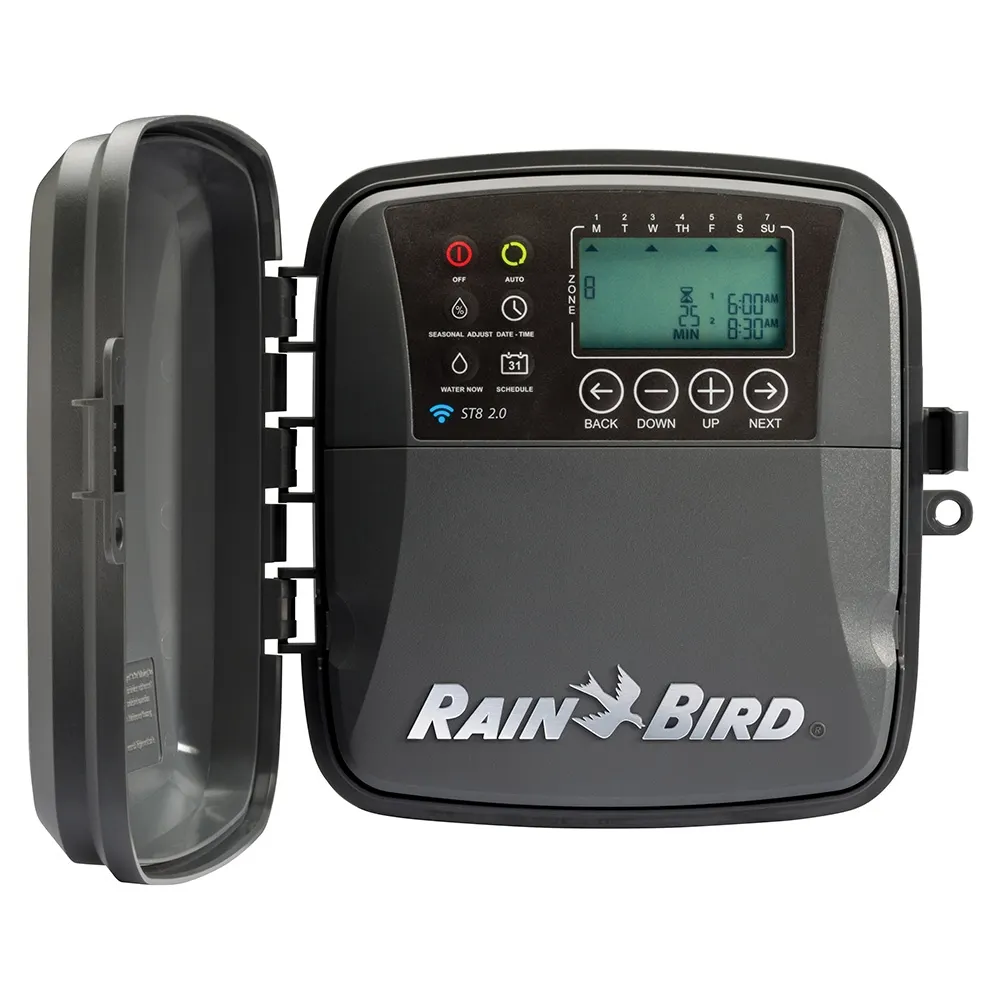
Rain Bird is an 8‑zone WiFi-enabled smart controller. It allows remote programming, weather-based adjustment, and zone-specific watering.
-
Details & features: Supports multiple zones, weather data integration, rain skip, cycle‑soak capability.
-
Benefit: It optimizes watering schedules based on actual conditions rather than fixed timers, reducing waste and stress to plants.
-
Use case: In a luxury garden, this can run multiple irrigation zones (accent beds, trees, groundcover) intelligently. It helps convert a standard valve setup into a premium, automated system.
2. sPlant Drip Irrigation System Automatic Watering Kit
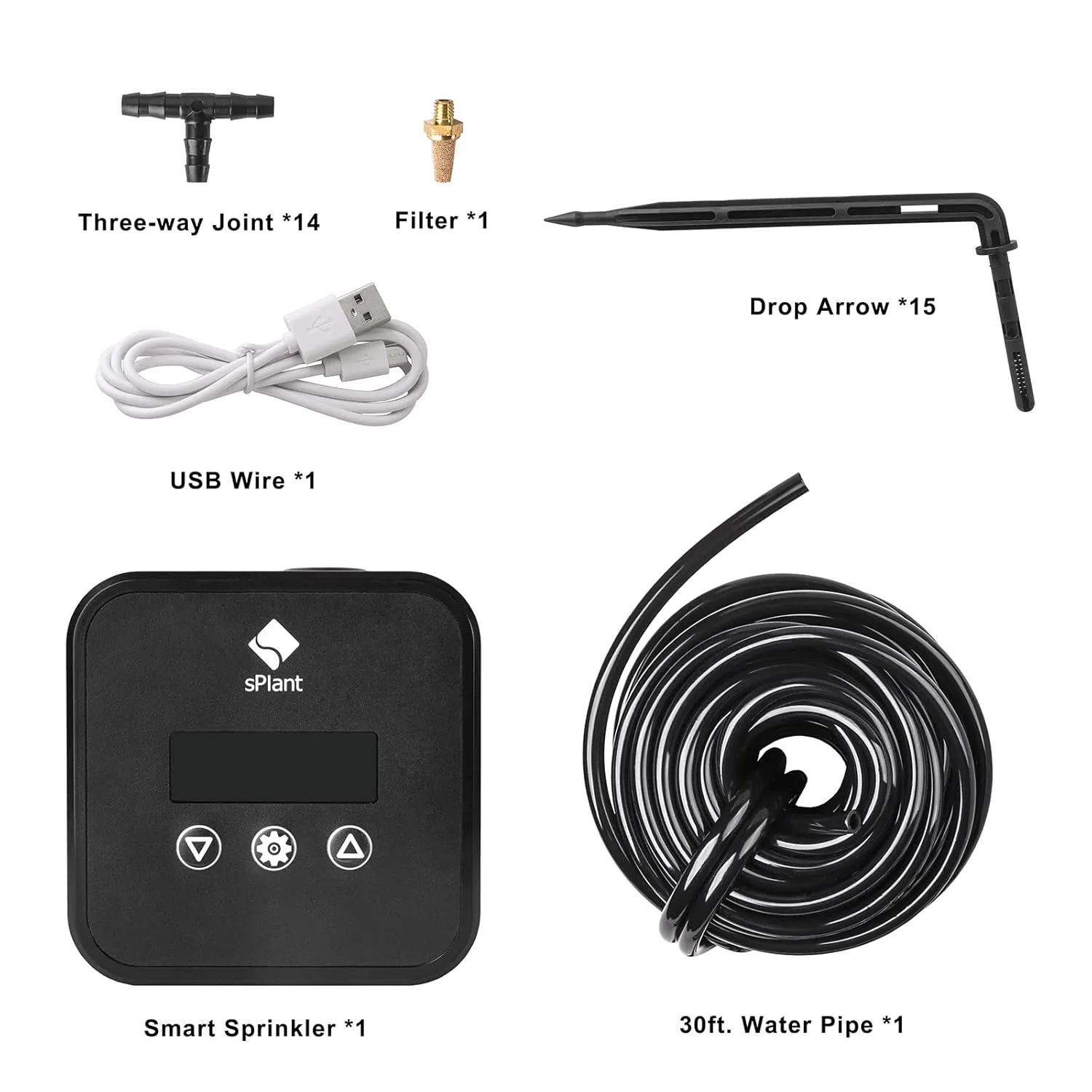
Plant Drip Irrigation System is a full drip irrigation kit including tubing, emitters, and connectors designed for retrofit installations.
-
Details & features: Modular layout, adjustable emitters, easy connection fittings.
-
Benefit: Enables discrete, efficient watering of plant root zones with minimal aesthetic disruption.
-
Use case: Ideal for planting beds, containers, or perimeter planting where traditional sprinklers would overspray hard surfaces.
3. Good Ideas 50 Gallon Rain Wizard Rain Barrel
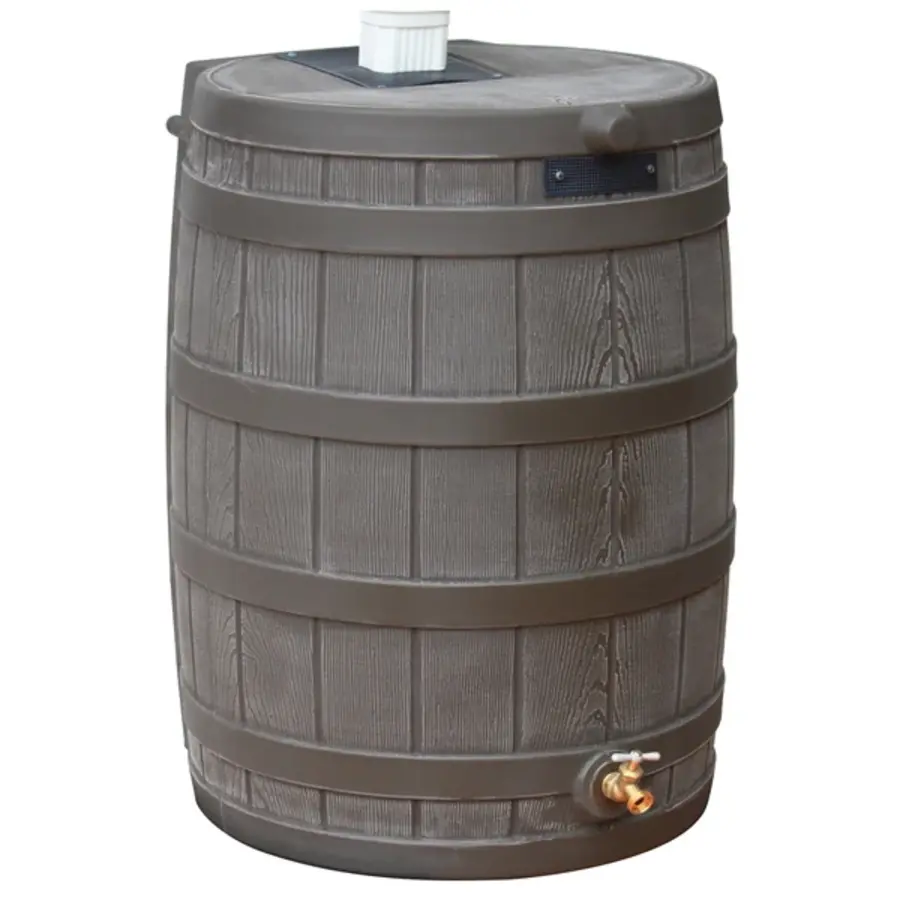
Good Ideas Rain Wizard is a 50‑gallon rainwater barrel for capturing roof runoff.
-
Details & features: Durable material, overflow spout, screen top, and bottom outlet.
-
Benefit: Captures clean rainwater for reuse, reducing reliance on mains water.
-
Use case: Used in tandem with gutter diverters, this barrel supplies stored water to drip systems or hand watering during dry periods.
4. Drip Irrigation Kit with 360° Flexible Hose (30 m)
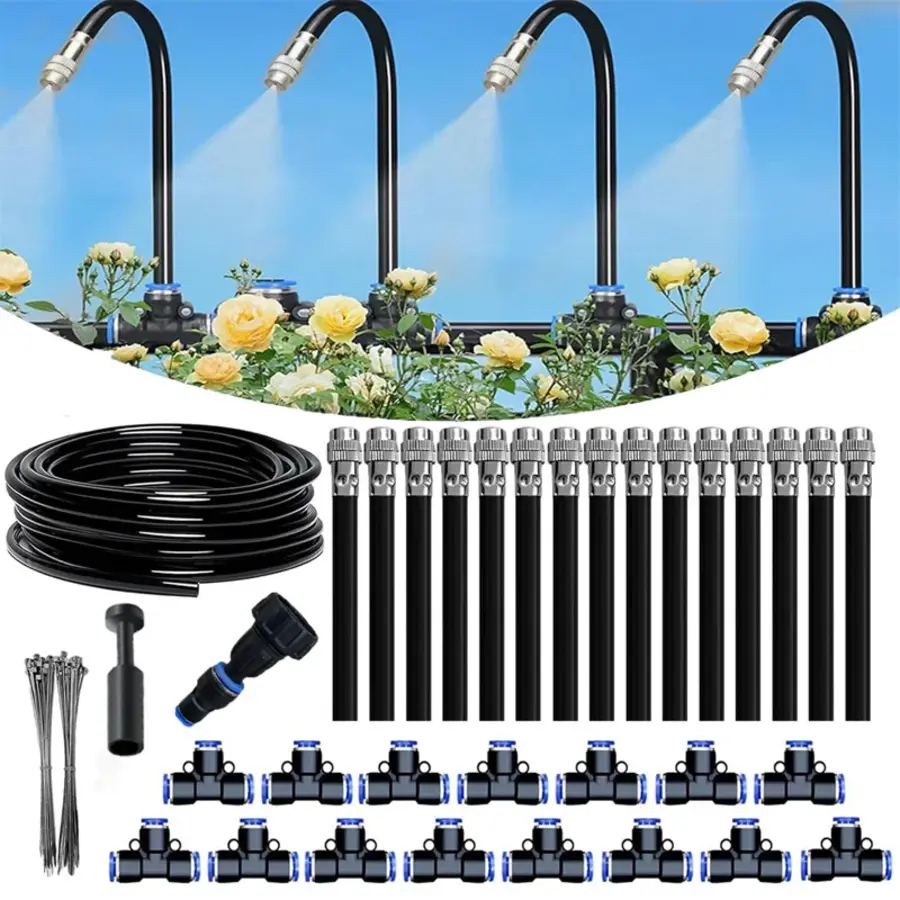
Drip Irrigation Flexible Hose is a kit with a 360° flexible drip hose and adjustable nozzles.
-
Details & features: Uniform distribution, flexible routing, adjustable flow heads.
-
Benefit: Good for densely planted zones or irregular layouts where rigid emitter placement is inconvenient.
-
Use case: Around shrubs or in curvilinear garden beds where a continuous watering line is more efficient than discrete emitters.
5. Garantia Rainwater Tanks & Underground Tanks (200 L Rain Barrel)
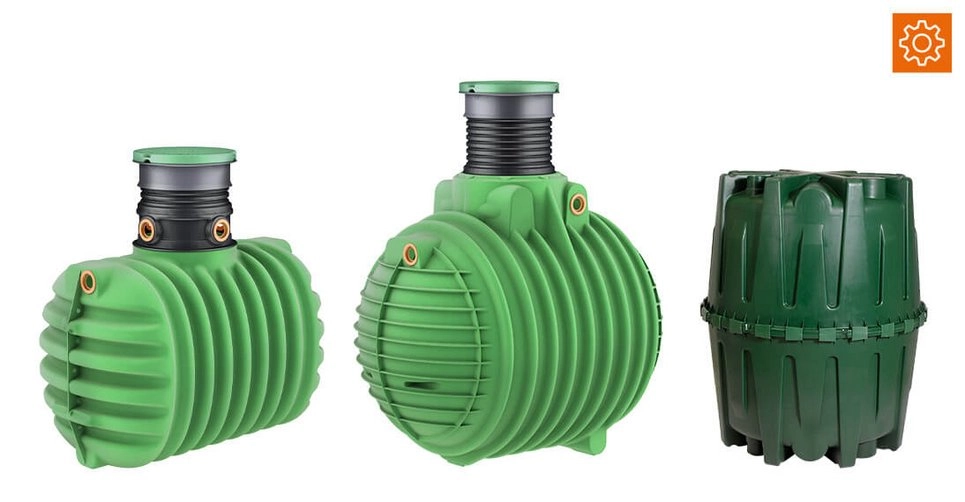
Garantia Rainwater is a 200-liter tank/rain barrel suitable for above-ground or semi-buried installation.
-
Details & features: Robust structure, connectors for linking multiple tanks, secure lid.
-
Benefit: Higher capacity storage reduces frequency of refilling, ideal for larger gardens or longer dry spells.
-
Use case: Acts as a central reservoir feeding multiple irrigation zones or feature elements in a luxury landscape.
In-Depth Benefits: Technology, Cost, & Aesthetics
Optimized Water Efficiency & Cost Savings
High-end systems reduce water use substantially, often 30‑50 % or more compared to conventional landscapes. Smart controllers, drip systems, and captured water reduce dependency on municipal supply.
Plant Health & Resilience
Controlled watering avoids drought stress and waterlogging. Deep delivered moisture encourages deeper rooting, making plants more resilient in dry spells.
Seamless Aesthetic Integration
Premium systems hide infrastructure pipes under paving or mulch, tanks behind walls, and controls in utility zones, preserving the visual appeal of the landscape.
Low Maintenance & Longevity
High-quality components resist clogging, UV damage, and wear. Automated monitoring reduces manual work. Maintenance is minimal but proactive, preserving design integrity over time.
Environmental & Regulatory Benefit
You reduce runoff, recharge groundwater, and align with water restrictions or sustainability codes. The landscape becomes part of the ecological solution rather than a burden.
Use Cases: Problems Solved & Why You Need It
Case A: Luxury Home Under Water Restrictions
A homeowner must maintain a lush landscape under strict watering limits. They install a smart timer (Rain Bird ST8O‑2.0), use a drip irrigation kit under mulch, and divert roofwater into a rain barrel. The system automatically waters high-priority zones while capturing rain to buffer dry spells.
Problem solved: Maintains visual prestige without violating local water mandates or overspending on water.
Case B: Retrofit of Existing Irrigation
An existing luxury yard with sprinklers is retrofitted: sprinklers replaced by drip kits, a smart controller installed, rain barrels added, and hardscape paths repaved with permeable material. Infrastructure is hidden beneath mulch or stone surfaces.
Problem solved: Upgrades efficiency without tearing out the entire yard; reduces water waste and bills.
Case C: Estate with Runoff & Erosion Issues
A sloped property loses much rainwater to runoff. Designers contour terrain, install dry creek channels or bioswales, and place rain tanks downhill. Rainwater feeds irrigation zones, replenishing losses.
Problem solved: Captures lost water, reduces erosion, supports plant zones, and reclaims resources.
Case D: Luxury Garden with Feature Elements
In a garden with water features (reflecting pool, fountain), the system recirculates water, stores excess rain, and adjusts use based on moisture sensors. Plant zones behind the features are drip irrigated discreetly.
Problem solved: Sustain the elegance of water elements while minimizing waste or constant refilling.
Outdoor Lighting & Visual Impact in Water-Smart Landscapes
Just because a garden uses less water doesn’t mean it should disappear at night. Premium outdoor lighting elevates the experience, adding drama and functionality while preserving the serene feel of a minimalist garden.
Use low-voltage LED uplighting to highlight specimen trees or sculptural succulents. In-ground path lighting can define walkways without being obtrusive. Solar-powered or motion-sensor fixtures reduce energy waste and support a broader sustainability strategy.
When paired with gravel, stone, or polished metal surfaces, light reflections can create luxury effects with zero water input. Strategically placed lights can even enhance the visual perception of space, making smaller drought-smart gardens feel expansive.
Pool Integration and Low-Water Landscapes: Can They Coexist?
Yes, and elegantly so. Pools, spas, and water features may seem at odds with water conservation, but they can be integrated responsibly within a luxury low-water design.
Modern pools use recirculating systems, automated covers to reduce evaporation, and even solar-powered pumps. They can be paired with drought-tolerant surroundings succulent beds, rock gardens, or corten steel planters, to create an oasis aesthetic without demanding constant watering.
Additionally, water-conscious features such as plunge pools, reflecting basins, or tiled water walls consume far less water than traditional lawn irrigation. When designed properly, these elements add a sense of calm and opulence while staying aligned with conservation goals.
How to Buy, Source & Implement (Affiliate‑Style Buttons)
Steps for Acquisition & Installation
-
Site survey & analysis (sun, slope, drainage)
-
Design layout & hydrozone mapping
-
Select premium components (drip kits, controllers, tanks)
-
Install hardscape/infrastructure first
-
Install piping & conceal systems
-
Program smart controls & sensors
-
Test, monitor, and calibrate
-
Maintain filters, flush systems, and check leaks periodically
Also, explore local nurseries, irrigation suppliers, sustainable landscape contractors, and specialty green building retailers.
Frequently Asked Questions
Q1: Can a luxury low‑water landscape look “too dry” or sparse?
A1: It can, if designed poorly. The key is balance: use statement specimens, repeating textures, quality hardscape, layered plantings, and focal points to fill space elegantly. Negative space is part of the design, not a void.
Q2: How often should I water in such a landscape?
A2: It depends on climate, soil, and plant types. Generally, you water deeply and infrequently. Smart controllers or moisture sensors help avoid overwatering. Many luxury low‑water landscapes need watering only weekly or biweekly in dry seasons.
Q3: How do I transition from a high‑water lawn landscape?
A3: Phase the change: remove or reduce turf, repave with permeable surfaces, install irrigation retrofit, plant drought-tolerant species, and reprogram systems. You don’t need to tear out everything at once; incremental upgrades preserve aesthetics while improving efficiency.
